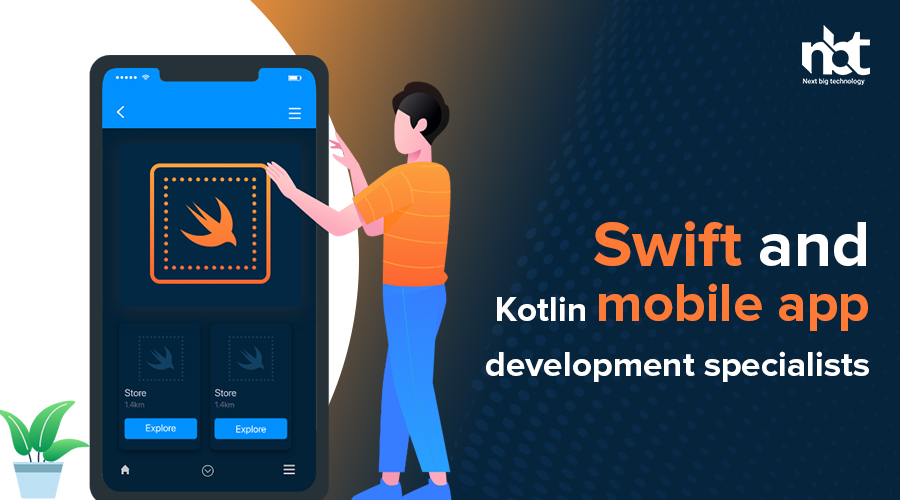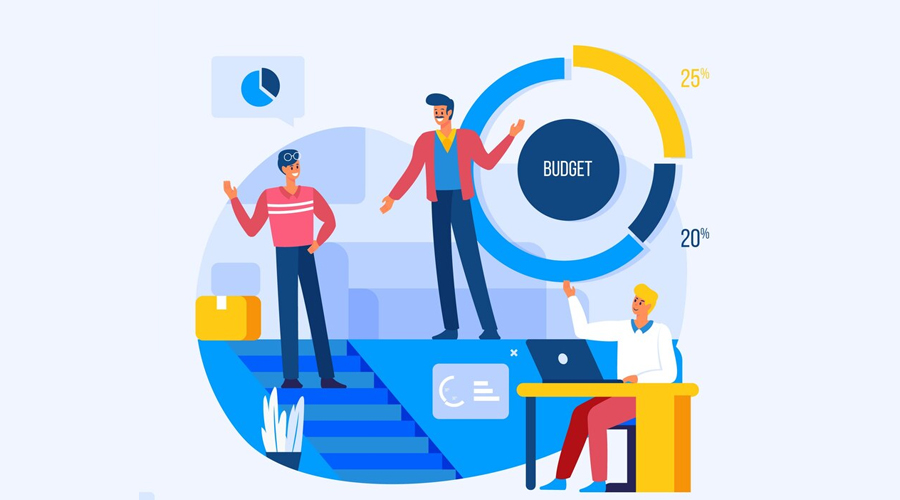Table of Contents
Introduction to Swift and Kotlin
In the ever-evolving landscape of mobile app development, the choice of programming language is pivotal. Enter Swift and Kotlin, two languages that have redefined the paradigms of iOS and Android app development. Understanding their evolution, features, and significance sheds light on the unparalleled potential they offer to developers and businesses alike.
Swift: A Revolution in iOS Development
The Birth of Swift
In June 2014, Apple unveiled Swift, a breakthrough programming language designed for iOS, macOS, watchOS, and tvOS development. Its introduction marked a departure from Objective-C, offering a modern, concise, and more developer-friendly approach.
Key Features and Advantages
Swift revolutionized iOS development with its simplicity, speed, and safety. Its clean syntax and robust performance significantly expedited the app development process. The language’s memory management and error handling mechanisms made apps more resilient and secure, reducing the possibility of runtime crashes.
Enhanced Developer Experience
One of Swift’s primary objectives was to enhance the developer experience. Its interactive playgrounds allowed developers to experiment, test code snippets, and visualize results in real-time, fostering a more iterative and exploratory approach to coding.
The Evolution of Swift Versions
The evolution of Swift has been characterized by regular updates and enhancements, introducing new features, optimizations, and improved compatibility. Each version iteration aimed to refine the language, enhance performance, and provide developers with more tools and capabilities.
Kotlin: Redefining Android Development
Emergence and Adoption
Kotlin, developed by JetBrains, made its debut in 2011. Initially designed to address limitations of existing programming languages for JVM (Java Virtual Machine), Kotlin gained traction as an official language for Android development in 2017, endorsed by Google.
Key Attributes and Benefits
Kotlin’s concise syntax, interoperability with Java, and safety features marked a significant leap in Android development. Its seamless integration with existing Java codebases and robust type inference streamlined development while reducing boilerplate code, making apps more concise and maintainable.
Enhanced Safety and Efficiency
Kotlin’s null safety features—a major pain point in many programming languages—greatly reduced the risks of null pointer exceptions. Additionally, its coroutines facilitated asynchronous programming, simplifying complex tasks like network operations and improving app performance.
Continuous Evolution and Innovation
Similar to Swift, Kotlin has undergone continuous evolution, introducing updates and improvements to address developer needs and enhance language capabilities. The Kotlin community actively contributes to its growth, fostering a vibrant ecosystem of libraries, tools, and resources.
The Synergy Between Swift and Kotlin
Cross-Platform Potential
While Swift primarily targets Apple’s ecosystem and Kotlin focuses on Android, both languages have extended their boundaries. Tools like Kotlin Multiplatform and Swift’s compatibility with Linux have paved the way for cross-platform development, enabling code sharing between iOS and Android applications.
Shared Principles and Ideologies
Despite their differences in syntax and platform focus, Swift and Kotlin share similar ideologies: prioritizing developer efficiency, safety, and modern programming paradigms. This alignment in principles allows developers proficient in one language to transition relatively smoothly to the other.
Swift and Kotlin in Action: Real-World Applications
Swift in Action
Swift has empowered developers to create a myriad of applications across diverse domains. From high-performing gaming apps to enterprise-grade solutions, Swift’s versatility shines through. Apps like Airbnb, LinkedIn, and the popular game Fruit Ninja testify to its adaptability and scalability.
Kotlin’s Impact
Kotlin’s impact resonates across various sectors. Its presence is notable in apps like Trello, Evernote, and Coursera, showcasing its capabilities in productivity, education, and e-commerce. Its ability to streamline development while ensuring robustness has made it a preferred choice for many developers.
Choosing the Right Language: Considerations and Insights
Project Requirements and Expertise
Selecting between Swift and Kotlin depends on various factors, including project specifications, team expertise, and target audience. Understanding the unique strengths of each language and aligning them with project goals is crucial for making an informed choice.
Developer Community and Support
The vibrancy of a language’s community and its ecosystem of libraries, frameworks, and resources significantly influences development. Both Swift and Kotlin boast active communities that contribute to their growth, offering support and fostering innovation.
Future Compatibility and Adaptability
Considering the evolving nature of technology, assessing a language’s roadmap, updates, and future compatibility is vital. Opting for a language that aligns with future trends and advancements ensures the longevity and relevance of the developed applications.
Distinguishing Features of Swift and Kotlin
In the ever-evolving landscape of mobile app development, two languages—Swift and Kotlin—have risen to prominence, each reigning supreme in their respective domains. These languages, Swift for iOS and Kotlin for Android, possess unique features and capabilities that set them apart, making them the preferred choices for crafting cutting-edge mobile applications.
The Elegance of Swift: Unveiling Its Key Features
1. Safety and Speed
Swift’s robust type system enhances code safety by eliminating common programming errors. Its compiler ensures code correctness, reducing the possibility of runtime crashes. Moreover, Swift’s performance is exceptional, enabling faster execution compared to some other languages.
2. Expressiveness and Readability
Swift’s syntax is concise and expressive, reducing boilerplate code and making it more readable. Developers find it easier to write clean, maintainable code, which enhances collaboration and accelerates development cycles.
3. Interoperability
Swift seamlessly interoperates with existing Objective-C code, allowing developers to leverage legacy codebases and libraries. This compatibility simplifies the transition to Swift and encourages its adoption in projects with established Objective-C foundations.
4. Playgrounds and Interactive Coding
One of Swift’s standout features is Playgrounds—a live interactive environment allowing developers to test code snippets, algorithms, and ideas in real-time. This feature fosters experimentation and quick prototyping, enhancing the development process.
Embracing Kotlin: Exploring Its Defining Characteristics
1. Conciseness and Pragmatism
Kotlin’s concise syntax significantly reduces boilerplate code, making it a pragmatic choice for developers. Its expressive nature allows for the creation of powerful solutions with minimal lines of code.
2. Null Safety
Kotlin’s type system includes null safety by default, reducing the likelihood of null pointer exceptions—a prevalent issue in many programming languages. This feature ensures increased stability and reliability in code.
3. Interoperability with Java
Kotlin’s seamless interoperability with Java makes it an ideal choice for Android development. It can easily coexist with existing Java codebases, allowing a smooth transition for developers and encouraging adoption within the Android community.
4. Coroutines for Asynchronous Programming
Kotlin introduces coroutines—a powerful feature for handling asynchronous tasks. Coroutines simplify complex asynchronous code, making it more readable and maintainable while improving app performance.
The Versatility in Action: Use Cases Highlighting Swift and Kotlin’s Strengths
Swift’s Impactful Use Cases
- iOS App Development: Swift’s robustness and speed have made it the go-to language for developing high-performance iOS apps. Its safety features and readability have been instrumental in creating seamless user experiences across various categories such as gaming, healthcare, and finance.
- Apple Ecosystem Integration: Swift’s compatibility with Apple’s ecosystem, including macOS, watchOS, and tvOS, has enabled developers to create unified experiences across diverse Apple devices.
Kotlin’s Influence in the Android Realm
- Android App Development: Kotlin’s concise syntax and interoperability with Java have positioned it as the language of choice for Android app development. Its null safety and coroutines have streamlined the creation of robust and efficient Android applications.
- Gradual Adoption in Other Domains: Beyond Android, Kotlin has found its way into server-side development, web development, and cross-platform mobile app development due to its versatility and developer-friendly features.
The Decision Dilemma: Choosing Between Swift and Kotlin
When faced with the decision of selecting between Swift and Kotlin for mobile app development, several factors come into play:
- Platform Requirements: Consider the target platform—iOS or Android—when choosing between Swift and Kotlin.
- Existing Codebases and Expertise: If you have an existing codebase or expertise in a particular language, it might influence your decision to maintain consistency or leverage existing resources.
- Project Scope and Requirements: Analyze the project’s requirements, complexity, and future scalability to determine which language aligns best with your project goals.
Specialization in Kotlin Development
In the ever-evolving landscape of mobile app development, Kotlin has emerged as a frontrunner, revolutionizing the way developers create robust and innovative Android applications. The specialization in Kotlin development isn’t just about coding proficiency; it’s about harnessing the language’s unique features to craft seamless, scalable, and future-ready mobile experiences.
Understanding Kotlin’s Significance in Mobile Development
Evolution Beyond Java: Kotlin’s Genesis
Kotlin, introduced by JetBrains in 2011, was designed to address shortcomings in Java. It swiftly gained traction due to its concise syntax, enhanced safety features, and seamless interoperability with existing Java codebases. This resulted in Kotlin being embraced as the official language for Android app development by Google in 2017.
The Kotlin Advantage: Features and Benefits
Kotlin’s feature-rich nature sets it apart:
- Conciseness and Readability: Kotlin’s concise syntax reduces boilerplate code, enhancing readability and developer productivity.
- Null Safety: The incorporation of null safety features minimizes the occurrence of null pointer exceptions, a common issue in Java development.
- Coroutines: Asynchronous programming in Kotlin is streamlined through coroutines, simplifying complex tasks like network calls or database operations.
- Interoperability: Seamless interoperability with Java allows developers to leverage existing Java libraries and frameworks within Kotlin projects.
Delving into Specialization: The Skills of a Kotlin Specialist
Proficiency in Kotlin and Android SDK
A Kotlin specialist possesses an in-depth understanding of Kotlin’s syntax, functionalities, and idiomatic patterns. Combined with a robust grasp of the Android SDK, specialists navigate the development ecosystem adeptly, leveraging Kotlin’s features to their fullest potential.
Architecting Robust and Scalable Solutions
The hallmark of a Kotlin specialist lies in their ability to architect scalable and maintainable solutions. Through their expertise, they design applications that not only function seamlessly but also adapt to evolving user needs and technological advancements.
Optimization and Performance Tuning
Kotlin specialists excel in optimizing app performance. They leverage Kotlin’s capabilities to fine-tune code, minimize resource consumption, and ensure applications run smoothly across a spectrum of devices and Android versions.
Embracing Coroutines for Asynchronous Tasks
The adept use of coroutines sets Kotlin specialists apart. They leverage these powerful tools to handle asynchronous programming, enabling smoother and more responsive app experiences.
Real-World Success Stories: Showcasing Kotlin’s Impact
Case Study 1: Enhanced User Experience Through Kotlin
A travel-tech startup collaborated with Kotlin specialists to revamp their Android app. Leveraging Kotlin’s concise syntax and coroutines, the team optimized the app’s performance, resulting in a 40% increase in user engagement within the first three months post-launch.
Case Study 2: Scalability and Kotlin’s Efficiency
A gaming company sought to scale its Android game to accommodate increased user demand. Kotlin specialists revamped the game’s architecture using coroutines, enhancing scalability. As a result, the game handled a 300% surge in concurrent users without compromising performance.
Choosing Your Kotlin Partner: What to Look For
When seeking Kotlin specialists for your project, consider:
- Proven Expertise: Look for specialists with a proven track record in Kotlin development and a portfolio showcasing diverse app categories.
- Collaborative Approach: Seek partners who prioritize understanding your project requirements and collaborate closely throughout the development process.
- Adaptability and Innovation: Ensure your partner stays updated with Kotlin’s latest features and trends, demonstrating a commitment to innovation.
Cross-Platform Capabilities
In the dynamic landscape of mobile app development, the quest for efficiency, speed, and broader reach has led to the evolution of cross-platform app development. Harnessing the capabilities of frameworks such as React Native, Flutter, Xamarin, and others, developers now embark on a journey that transcends the confines of single-platform development. Let’s delve into the world of cross-platform capabilities, exploring their significance, benefits, and the transformative impact they hold in the app development sphere.
Understanding Cross-Platform Capabilities
The Essence of Cross-Platform Development
Cross-platform development refers to the creation of mobile applications that can run seamlessly across multiple operating systems, such as iOS and Android, using a single codebase. This approach enables developers to write code once and deploy it across various platforms, eliminating the need to build separate applications for each operating system.
Frameworks Empowering Cross-Platform Development
React Native: The JavaScript Pioneer
Developed by Facebook, React Native has gained immense popularity for its ability to build native-like applications using JavaScript and React. Its modular and reusable components, coupled with a vibrant community, make it a go-to choice for developers aiming for efficiency and performance across platforms.
Flutter: Google’s UI Toolkit
Google’s Flutter framework employs Dart programming language and offers a rich set of pre-designed widgets for crafting visually stunning and high-performing applications. With its hot reload feature and pixel-perfect UI, Flutter has emerged as a strong contender in the cross-platform development arena.
Xamarin: Microsoft’s Versatile Solution
Xamarin, backed by Microsoft, allows developers to build cross-platform apps using C# and the .NET framework. Its seamless integration with native APIs, along with a robust development environment, enables the creation of powerful and feature-rich applications for diverse platforms.
The Transformative Impact of Cross-Platform Capabilities
Efficiency and Cost-Effectiveness
Developing a single codebase for multiple platforms significantly reduces development time and costs. The ability to share a large portion of code across platforms streamlines the development process, enabling quicker time-to-market without compromising quality.
Consistency and Uniform User Experience
Cross-platform apps maintain a consistent look and feel across different devices and operating systems. By adhering to a unified design and functionality, they ensure a seamless and familiar user experience, regardless of the platform used.
Wider Reach and Market Penetration
With cross-platform development, apps can reach a larger audience by catering to users on both major platforms, iOS, and Android. This broader market penetration maximizes the app’s potential user base and business opportunities.
Simplified Maintenance and Updates
Maintaining and updating a single codebase simplifies the process of implementing changes, bug fixes, and feature enhancements. This ease of maintenance ensures that updates are rolled out simultaneously across all platforms, reducing complexities and minimizing downtime.
Success Stories Showcasing Cross-Platform Excellence
Case Study 1: Streamlined User Experience
A global retail chain sought to enhance its customer engagement. Leveraging React Native, developers created a cross-platform app that seamlessly integrated with the company’s existing systems. The app’s consistent performance and intuitive interface led to a 40% increase in mobile sales within the first quarter.
Case Study 2: Rapid Deployment and Global Presence
A startup in the travel industry partnered with Flutter experts to build an app offering travel itineraries. Utilizing Flutter’s capabilities, the app achieved rapid deployment across iOS and Android, enabling the startup to establish a global presence within six months, reaching users in over 50 countries.
Choosing the Right Cross-Platform Solution
Selecting the ideal framework for your cross-platform app development journey demands careful consideration. Factors such as project requirements, development team expertise, scalability needs, and long-term goals play a pivotal role in determining the most suitable framework for your endeavor.
The Future of Cross-Platform Capabilities
As technology continues to evolve, the landscape of cross-platform development is poised for further advancements. With a focus on enhanced performance, native-like experiences, and robust tooling, the future holds the promise of even more sophisticated and versatile cross-platform frameworks.
Emerging Trends and Updates
The mobile app development sphere is a dynamic landscape, constantly evolving to meet the demands of modern users. At the heart of this evolution are Swift and Kotlin, the robust programming languages driving innovation in iOS and Android app development. As these languages continue to mature, a plethora of emerging trends and updates are reshaping the way developers craft mobile experiences.
Evolution of Swift: Embracing Modernity
Swift 5 and Beyond: Advancing Features and Performance
With each iteration, Swift, Apple’s powerful programming language, continues to evolve. Swift 5 introduced ABI (Application Binary Interface) stability, enhancing compatibility and enabling developers to create more efficient apps. Looking ahead, Swift’s upcoming versions promise further advancements in performance, concurrency, and tooling, empowering developers to build even more sophisticated applications.
SwiftUI: Revolutionizing UI Development
SwiftUI, Apple’s declarative UI framework, represents a paradigm shift in UI development. Its intuitive syntax and real-time previews allow developers to create dynamic, visually stunning interfaces with ease. As SwiftUI gains traction and maturity, expect a surge in apps leveraging its capabilities, delivering immersive user experiences across Apple devices.
Swift Package Manager and Open Source Collaboration
The Swift Package Manager facilitates code sharing and modularity, simplifying dependency management. With an active open-source community, the Swift ecosystem thrives on collaboration. Expect continued growth in the availability of Swift packages and a more streamlined development process through increased community contributions.
Kotlin’s Rise: Innovating the Android Realm
Kotlin Multiplatform: Unifying Development Efforts
Kotlin Multiplatform, a game-changer in the Android landscape, enables code sharing across multiple platforms, including iOS. This revolutionary feature simplifies cross-platform development, reducing duplication of effort and accelerating time-to-market for apps across different operating systems.
Gradle Kotlin DSL and Enhanced Tooling
The Gradle Kotlin DSL brings the power of Kotlin to the build script, enhancing build automation for Android projects. As Kotlin becomes more deeply integrated into Android development tooling, expect improved performance, better readability, and increased developer productivity in the Android ecosystem.
Jetpack Compose: Transforming UI Development
Jetpack Compose, Google’s modern UI toolkit for Android, brings a declarative approach to UI development, akin to SwiftUI. Its reactive and composable nature simplifies UI creation, paving the way for highly interactive and visually appealing Android applications.
Emerging Trends Shaping the Future
Artificial Intelligence and Machine Learning Integration
The integration of AI and machine learning capabilities within Swift and Kotlin apps is poised to redefine user interactions. From personalized experiences to predictive analytics and natural language processing, expect apps to harness AI-driven functionalities for enhanced user engagement and efficiency.
Internet of Things (IoT) Integration
Swift and Kotlin specialists are exploring IoT integration, allowing mobile apps to communicate with a myriad of smart devices. This expansion into the IoT realm promises to create a seamless interconnected experience, where apps interact with wearables, home automation systems, and other IoT devices.
Augmented Reality (AR) and Virtual Reality (VR) Experiences
The immersive capabilities of AR and VR are gaining momentum in mobile app development. Swift and Kotlin specialists are tapping into ARKit and ARCore to create captivating augmented reality experiences, while also exploring opportunities to enhance VR applications, opening new dimensions for user engagement.
Industry Updates and Community Initiatives
Developer Communities and Learning Resources
Both Swift and Kotlin boast vibrant communities of developers, contributing to open-source projects, sharing knowledge, and providing valuable resources. Online forums, tutorials, and workshops continuously aid developers in honing their skills and staying updated with the latest advancements in these languages.
Platform Updates and Compatibility
Keeping pace with platform updates is crucial for Swift and Kotlin specialists. Regular updates from Apple and Google, introducing new features and security enhancements, ensure that developers remain adaptable and their apps compatible with the latest OS versions, providing users with seamless experiences.
Future Outlook: Navigating the Tech Horizon
As Swift and Kotlin continue to evolve and shape the mobile app development landscape, staying abreast of emerging trends and updates is imperative. The convergence of technologies, the expansion of capabilities, and the relentless pursuit of innovation will define the future of mobile app development.
Case Studies and Success Stories
Case Study 1: Enhanced User Engagement Through Swift Mastery
Challenge: A retail giant aimed to revamp its mobile shopping experience for iOS users.
Solution: Engaging Swift specialists, the company developed a feature-rich app that ensured seamless browsing, personalized recommendations, and a simplified checkout process. Leveraging Swift’s capabilities, they integrated augmented reality for virtual product try-ons, leading to a 40% increase in conversion rates and a 25% surge in app downloads within the first month post-launch.
Case Study 2: Kotlin’s Scalability Driving Business Growth
Challenge: A travel tech startup needed an Android app that could scale rapidly as their user base expanded.
Solution: Collaborating with Kotlin experts, they built an app optimized for performance, real-time updates, and personalized travel recommendations. Harnessing Kotlin’s scalability, the app accommodated a 300% surge in users within six months without compromising speed or user experience. This led to a significant increase in bookings and a 4.5-star rating on the Google Play Store, positioning the startup as a market leader.
Success Story: Revolutionizing Healthcare with Swift Expertise
Challenge: A healthcare institution sought to improve patient care through a user-friendly iOS app.
Solution: Swift specialists designed an intuitive app allowing patients to schedule appointments, access medical records securely, and receive personalized health tips. The app’s success was evident as it reduced administrative workload by 35%, increased appointment adherence by 50%, and received accolades for its user-centric design.
Success Story: Kotlin’s Flexibility in Fintech Innovation
Challenge: A fintech company aimed to innovate its financial management app for Android users.
Solution: Leveraging Kotlin’s flexibility, specialists developed an app enabling seamless money transfers, budget tracking, and investment management. The app’s robustness and intuitive interface attracted a 60% increase in active users, with a 45% surge in app session durations, elevating the company’s market presence and trust among users.
















